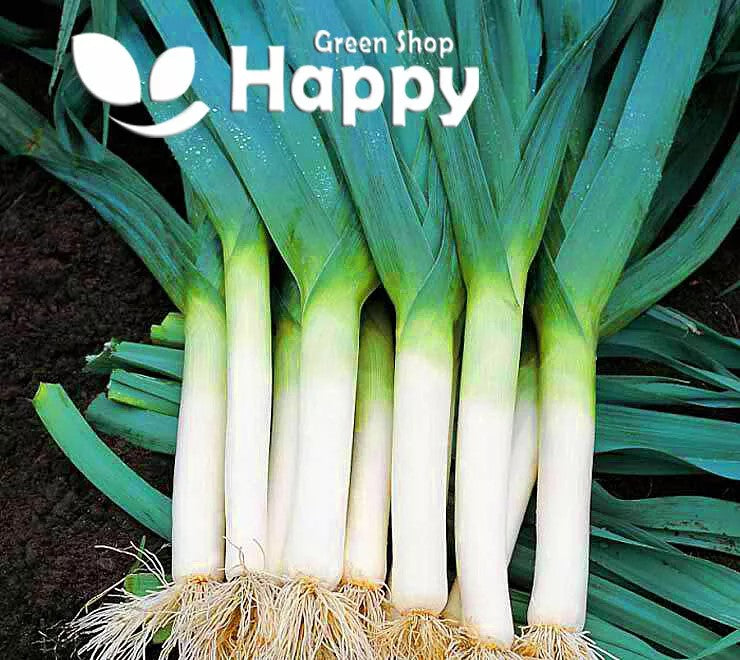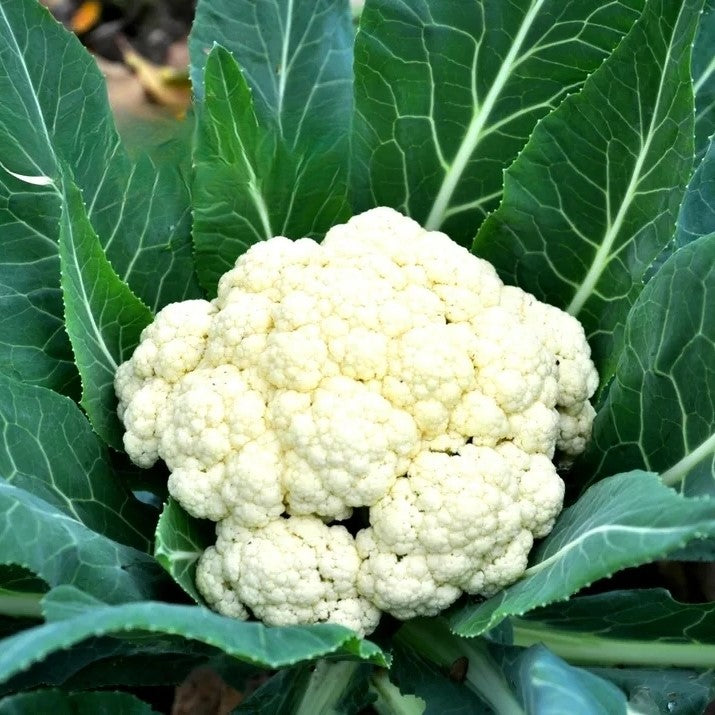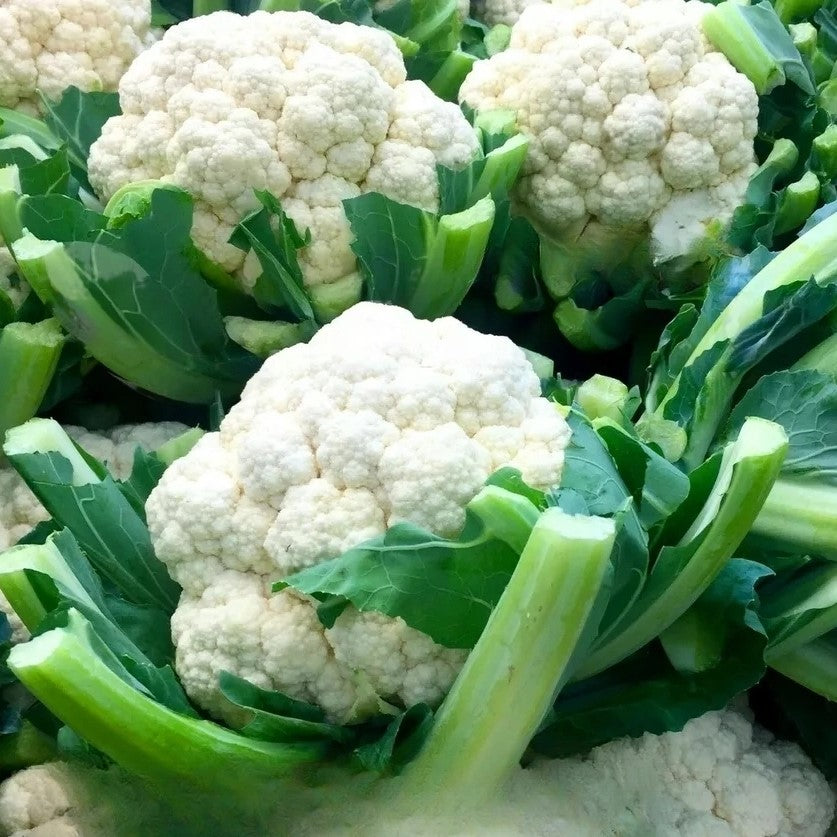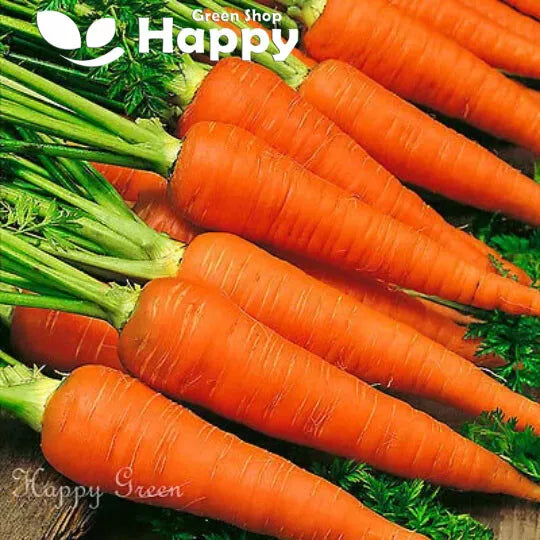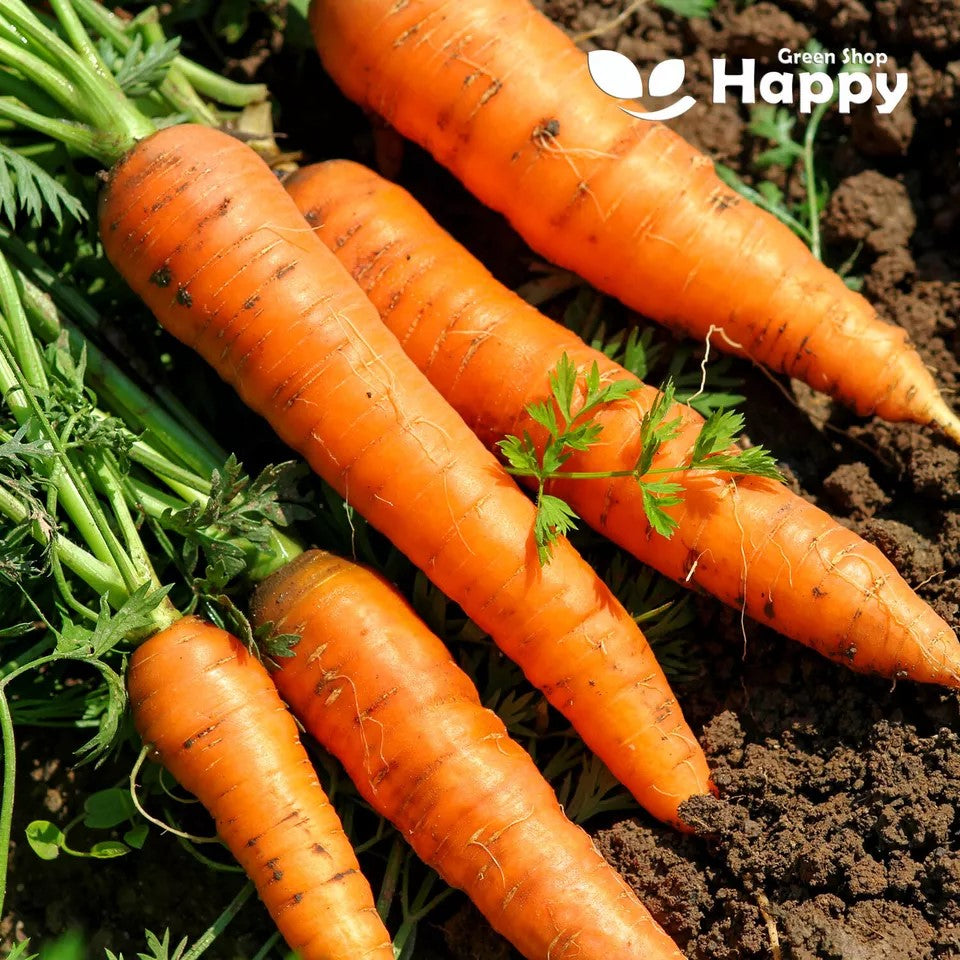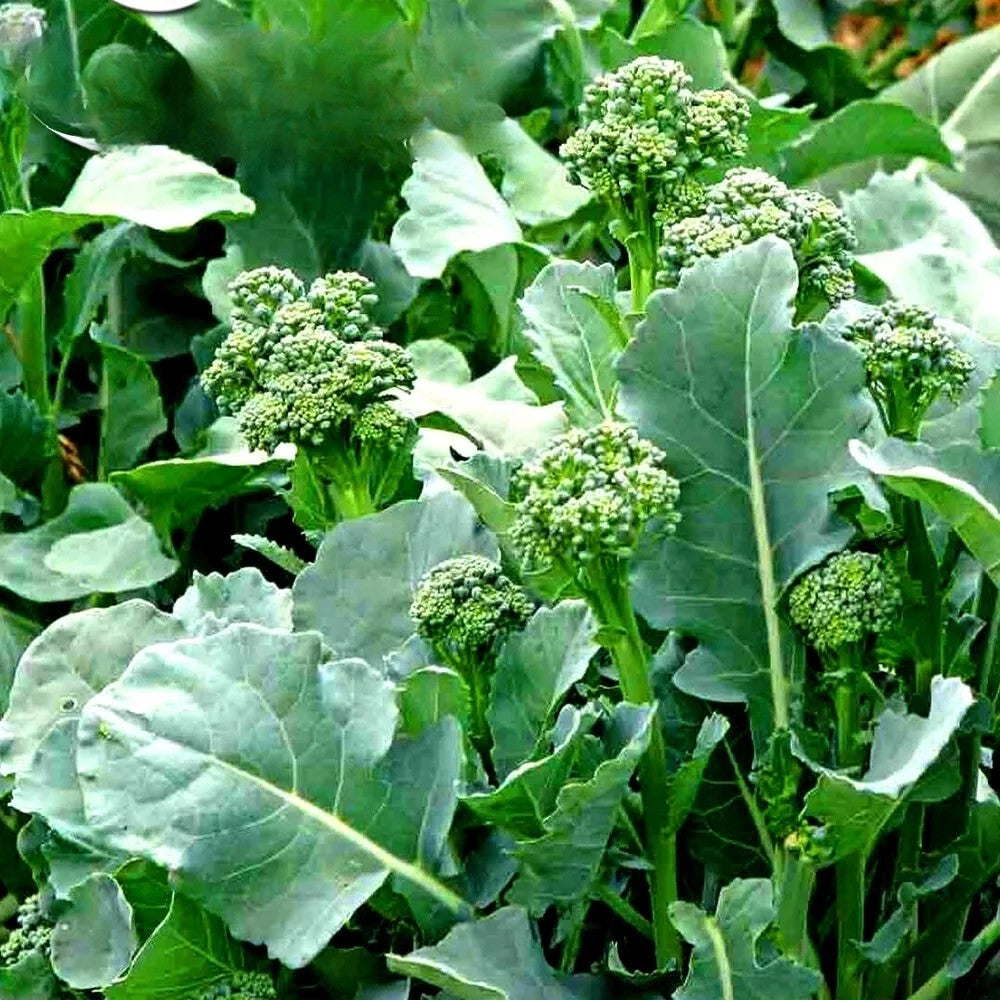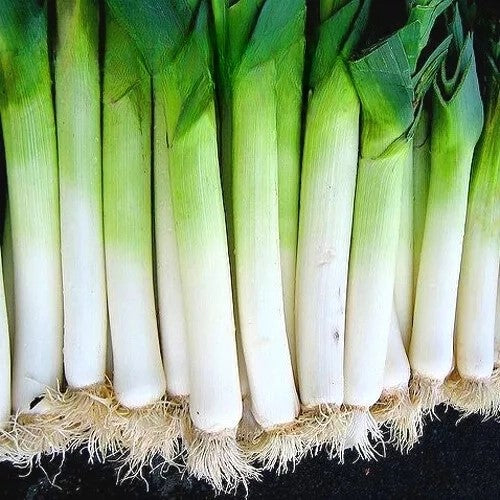Sort by:
97 products
97 products
Cauliflower 'Delta' – Seeds (Brassica oleracea)
Cauliflower 'Delta' is a high-yielding, early-maturing variety producing large, compact, creamy-white heads. Its tender curds and mild flavor make it ideal for steaming, roasting, soups, or fresh in salads.
Reliable and easy to grow, 'Delta' thrives in both home gardens and allotments, offering consistent quality and excellent resistance to common diseases.
How to Grow
-
Sow indoors: February – April
-
Transplant outdoors: April – June
-
Depth: 0.5–1 cm
-
Spacing: 40–50 cm between plants, rows 60–70 cm apart
-
Position: Full sun, sheltered from strong winds
-
Soil: Fertile, well-drained, rich in organic matter
-
Watering: Keep soil consistently moist, avoid water stress
Key Features
-
Early-maturing variety with large, compact, creamy-white heads
-
Mild, tender flavor perfect for steaming, roasting, and soups
-
High-yielding and reliable growth
-
Excellent resistance to common cauliflower diseases
-
Suitable for home gardens, allotments, and small-scale cultivation
Harvest
-
Harvesting period: June – September
-
Pick heads when compact and firm for best flavor and storage.
Short Tip
Tie outer leaves over the developing heads to protect from sunburn and maintain whiteness.
Cauliflower 'Beta' – Seeds (Brassica oleracea)
The Cauliflower 'Beta' is a vigorous, reliable variety that produces large, firm white curds with excellent flavor. Known for its resilience and uniform heads, it’s a dependable choice for both home gardeners and allotment growers. Its compact growth makes it suitable for smaller gardens, while still delivering generous yields.
Perfect for steaming, roasting, or adding to soups and curries, 'Beta' cauliflower brings freshness and versatility to the kitchen.
How to Grow
-
Sow indoors: February – May
-
Sow outdoors: April – June
-
Spacing: 45–60 cm apart
-
Soil: Fertile, firm, moisture-retentive soil enriched with compost
-
Position: Sunny, sheltered location
-
Care: Water regularly, protect from pests, and firm soil around stems to support strong curd formation
Key Features
-
Large, firm white curds with excellent taste
-
Reliable and uniform cropper
-
Compact plants suitable for gardens and allotments
-
Versatile kitchen use – steaming, roasting, curries, and soups
-
Easy to grow with good resilience
Sowing & Harvest
-
Sow: February – June
-
Harvest: July – October
Carrot 'Early Nantes 3' – Seeds (Daucus carota)
The classic Carrot 'Early Nantes 3' is a reliable, early-maturing variety producing smooth, cylindrical roots with a bright orange color and sweet, tender flesh. Known for its uniform shape and excellent flavor, it’s perfect for fresh eating, juicing, steaming, or roasting. A favorite among gardeners, this variety is easy to grow and ideal for successional sowing throughout the season.
How to Grow
-
Sow seeds outdoors from March to July.
-
Sow thinly, 1 cm deep, in finely prepared soil, in rows 20–30 cm apart.
-
Thin seedlings to 5–8 cm spacing for well-formed roots.
-
Prefers light, well-drained soil in full sun.
-
Keep soil moist to prevent splitting.
Key Features
-
Classic early Nantes variety
-
Smooth, uniform, cylindrical roots
-
Sweet, tender flesh with excellent flavor
-
Quick to mature and high-yielding
-
Great for successional sowing
Ideal For
-
Fresh eating and juicing
-
Steaming, roasting, or soups
-
Succession sowing for extended harvests
-
Kitchen gardens, raised beds, and allotments
Sowing & Harvest
-
Sow: March to July
-
Depth: 1 cm
-
Spacing: 5–8 cm between plants, 20–30 cm between rows
-
Harvest: June to October
Quick Tip
-
Sow little and often every 2–3 weeks for a continuous supply of tender carrots.
Carving Pumpkin ‘Connecticut Field’ Seeds (Cucurbita pepo)
Grow classic, large pumpkins with Carving Pumpkin ‘Connecticut Field’ (Cucurbita pepo). This traditional variety produces robust, round-to-flattened fruits perfect for Halloween carving, autumn decorations, and cooking. Easy to grow and highly productive, it’s ideal for home gardens, allotments, and family pumpkin projects.
How to Grow
-
Sow seeds indoors 3–4 weeks before the last frost or directly outdoors after frost risk has passed.
-
Use fertile, well-drained soil in full sun.
-
Sow seeds 2–3 cm deep and thin seedlings to 90–120 cm apart.
-
Provide ample space for sprawling vines and regular watering.
-
Harvest pumpkins when fully orange, firm, and the skin resists pressure.
Key Features
-
Large, round-to-flattened pumpkins
-
Ideal for carving, decoration, and cooking
-
Hardy, easy to grow, and highly productive
-
Classic autumn pumpkin variety
-
Suitable for home gardens, allotments, and family projects
Ideal For
-
Halloween carving and festive decoration
-
Autumn cooking, soups, and baking
-
Vegetable gardens and allotments
-
Family and community gardening projects
Sowing
-
Best time: 3–4 weeks before last frost indoors or after frost outdoors
-
Depth: 2–3 cm
-
Spacing: 90–120 cm apart
-
Prefers full sun and fertile, well-drained soil
Quick Tip
-
Mulch around the base of plants to retain moisture and prevent soil-borne diseases.
Carrot 'Amsterdam 2' – 1000 Seeds (Daucus carota)
Carrot 'Amsterdam 2' is a very early and reliable variety producing smooth, slender, and sweet roots. With tender flesh and excellent flavor, it is perfect for eating fresh, juicing, or cooking. A quick-growing carrot ideal for successional sowings to enjoy a steady harvest all summer long.
How to Grow
-
Sow outdoors: February – July in well-prepared, finely raked soil.
-
Sow thinly in rows 20–25 cm apart.
-
Thin seedlings to 5 cm spacing for best root size.
-
Prefers full sun and well-drained, sandy soil.
Key Features
-
Early, fast-maturing variety
-
Slender, smooth, and sweet roots
-
Excellent for fresh eating, juicing & cooking
-
Ideal for containers and smaller gardens
-
Suitable for successional sowing
Ideal For
-
Fresh snacking and salads
-
Juices and soups
-
Succession planting for continuous crops
Sowing & Harvest
-
Sow: February – July
-
Harvest: May – September
Quick Tip
Sow small batches every 2–3 weeks to ensure a continuous harvest of tender carrots throughout the season.
Broccoletto 'Quarantino' – Seeds
(Brassica rapa) – Traditional Italian Spring Green
Broccoletto 'Quarantino' is a classic Italian leafy vegetable, prized for its tender, flavorful shoots and leaves. Belonging to the Brassica rapa family, this variety is fast-growing and ready to harvest in just 40 days – hence the name Quarantino (“forty days”). It is widely used in traditional Italian cuisine, either lightly steamed, sautéed with olive oil and garlic, or added to soups and pasta dishes.
Key Features
-
Type: Hardy leafy green (annual/biannual)
-
Growth: Vigorous, compact, fast-maturing (around 40 days)
-
Flavor: Tender, slightly peppery and nutty taste
-
Harvest: Young leaves and shoots for continuous picking
-
Use: Italian cuisine, stir-fries, soups, pasta, and side dishes
Ideal For
-
Traditional Italian cooking
-
Cut-and-come-again harvests
-
Quick, reliable leafy green supply
-
Kitchen gardens and allotments
Sowing & Growing
-
Sow outdoors: March–September, in rows or broadcast.
-
Spacing: 20–30 cm between plants.
-
Soil: Fertile, well-drained soil enriched with compost.
-
Sunlight: Full sun to partial shade.
-
Harvest: From 40 days after sowing, cut young shoots regularly to encourage new growth.
Care Tips
-
Keep soil moist for tender leaves.
-
Harvest frequently to prolong production.
-
Best enjoyed fresh – tender shoots have peak flavor.
Autumn Leek 'October' – Seeds (Allium porrum)
Autumn Leek 'October' is a hardy, slow-growing variety ideal for autumn and winter harvests. Producing long, thick, pale stems with mild, sweet flavor, it is perfect for soups, stews, quiches, and braised dishes.
Reliable and robust, this variety tolerates frost well, making it a staple for late-season vegetable gardens, raised beds, and allotments.
How to Grow
-
Sow indoors: February – March
-
Transplant outdoors: May – June
-
Depth: 1–2 cm
-
Spacing: 15–20 cm between plants, rows 30–40 cm apart
-
Position: Full sun to partial shade
-
Soil: Deep, fertile, well-drained, enriched with compost
-
Watering: Keep soil moist, avoid waterlogging
Key Features
-
Hardy leek variety for autumn and winter harvest
-
Long, thick, pale stems with mild, sweet flavor
-
Excellent for soups, stews, quiches, and braised dishes
-
Frost-tolerant and reliable in cold weather
-
Suitable for home gardens, raised beds, and allotments
Harvest
-
Harvesting period: October – February
-
Pull leeks when stems are thick and firm; can overwinter in the ground with light mulching.
Short Tip
Blanch stems by mounding soil around them in late summer for longer, tender white stems.
Showing 97/97

